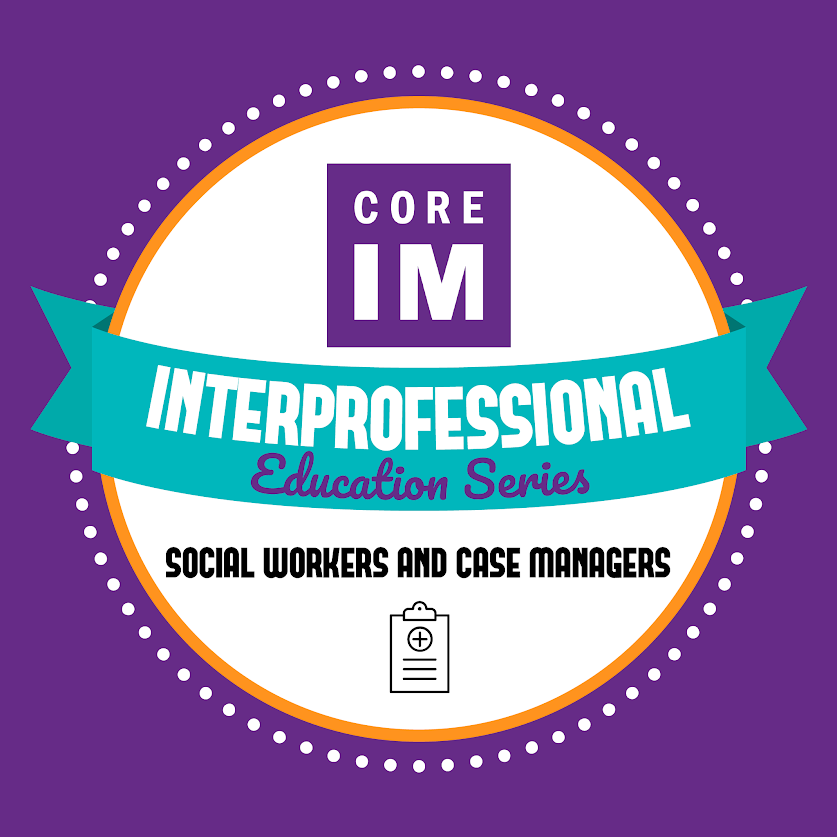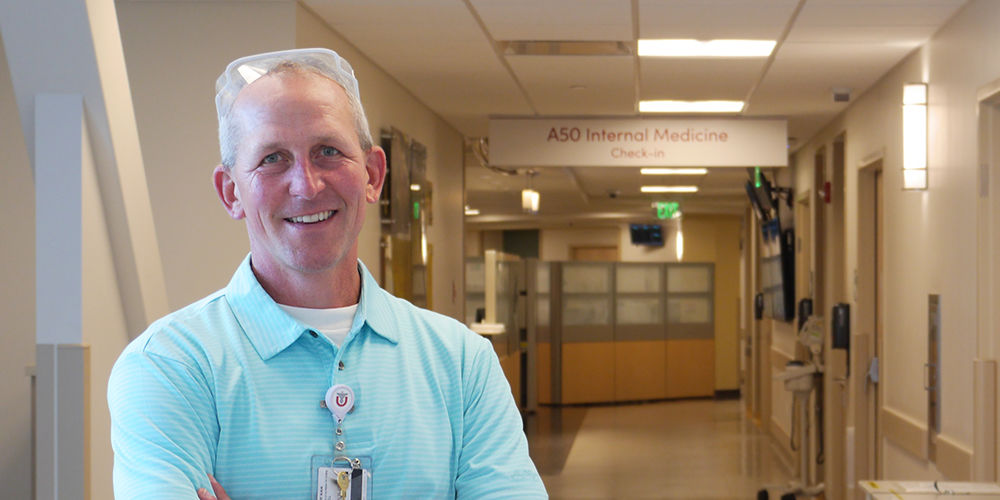
Todd Selmer was recently interviewed by NYU Langone Health's online journal Clinical Correlations.
In this podcast, he joins colleagues from across the nation to discuss roles within teams, daily operations, and importance of communication.
OVID-19 has changed just about everything about care. From the obvious—reducing the risk of infection and keeping visitors out of our hospitals to the minutiae of workflows designed to provide each patient with a personalized care plan. New complexities include transitioning at-risk patients out of the hospital and the increased importance of strong community partnerships to best support patients.
When I describe case management to other people, I say “I'm the travel agent of the hospital.” As a case manager, I work with the patient’s team—physicians, social workers, therapists, nurses—to make sure the patient has everything they need when they leave the hospital. I help coordinate the patient’s medical equipment, follow-up appointments, medications at the time of discharge and beyond. I coordinate with the patient's next destination such as post-acute care facilities. I work with skilled nursing and assisted living facilities, as well as the patient’s payer, to find the right place for the patient to fully recover.
I came to nursing after other careers, and I bring my own world experience to this unique situation. I’ve been a nurse on the general medicine floor, a palliative care nurse, and a nurse leader. I’ve become a specialist in case management, and I really like to take on hard challenges, like the patient who doesn't have proper funding or has transportation challenges in our 400-mile circle of influence and needs a special kind of care.
COVID has meant that we’re breaking new ground trying to find the best place for a patient after they leave the hospital. Over the last 10 weeks, there have been two skills I’ve relied on again and again as we navigate new, never seen before complexities: cultivating relationships and communication.
Know when to pivot—together
Doing the best thing for patients in this new normal means constant change. Some pre-COVID workflows simply don't work right now. You have to pivot—make the changes necessary to meet the current demand. I’ve relied on my established relationships and partnerships to make this easier. For example, an assisted living facility sent us a patient suspected of COVID. After the visit, they were hesitant to take the patient back. Since we can’t keep people in the hospital for two weeks for quarantine, we had to build an alternative plan together.
Placement of recovering COVID patients is a new problem we've never encountered before. Understandably, skilled nursing facilities don’t want to endanger the rest of their population. For certain patients, we were able to place them at a dedicated facility that was able to accommodate separate rooms with a separate entrance and showers so the staff could protect themselves or in dedicated COVID-only facilities.
The care of homeless patients also led us to break new ground. We worked with the Health Department to pick up recovering COVID-positive patients in a special bus that would transport them to separate COVID shelters for quarantine. We didn’t want to endanger the whole population by sending infected people out into the street.
Spend time building rapport
Building rapport 101
David Burkus shares the science behind building quick connection in "8 Questions to Ask Someone Other Than What Do You Do?" (HBR 2018)
Elizabeth Weingarten shares "20 questions to ask instead of 'How are you doing right now?'" for some COVID-19 relevant rapport building. (Quartz 2020)
Rapport sounds like what it is—having a conversation instead of just asking questions. It’s building a relationship with a person. It means taking the time to read the H&P and find something to talk about with the patient before entering the room. It means being deliberate about going in with an upbeat attitude and a smile. Simply pulling down your mask for a moment to say—“this is what I look like” can help break the ice.
For me personally, I know that I don't want be the next guy with a clipboard that comes in to your room and asks you questions you already answered. And I don’t want to be known as the guy that calls vendors and just asks for things. As a case manager, I come into patients’ rooms and help them plan what’s next. Sometimes those decisions or plans are difficult to make and many involve losing independence. Having patients trust that you have their best interests in mind is a must.
Implementing patients' plans often requires me to call a skilled nursing facility and ask for the admissions coordinator to do a fair amount of work. Spending time to create a relationship with vendors or facilities goes a long way. Building rapport means I care about you, my colleague, and I care about our patients.
Building rapport with outside organizations or even teams across our own organization also means identifying shared goals. What are we both trying to achieve, and how can we help each other out? Investing time building rapport helps the work move faster in the long run.
Todd Selmer
Continually speaking up is one of the most challenging things an employee does, and making it safe to speak up takes consistent supportive leadership. Members of the patient support services team share how to empower employees to highlight issues and provide solutions.
In the new series Book Club for Busy People, Accelerate shares highlights of books we’re hearing about from the community. First up: how thinking about others’ needs strengthens teams and increases civility in The Outward Mindset.
Hospitalist Ryan Murphy reflects on the care his dad received as one of Utah’s first hospitalized COVID-19 patients. The experience shaped how he communicates with patients—whether or not they have COVID—in spite of isolation, masks, and physical distancing.
